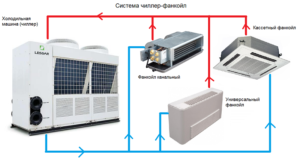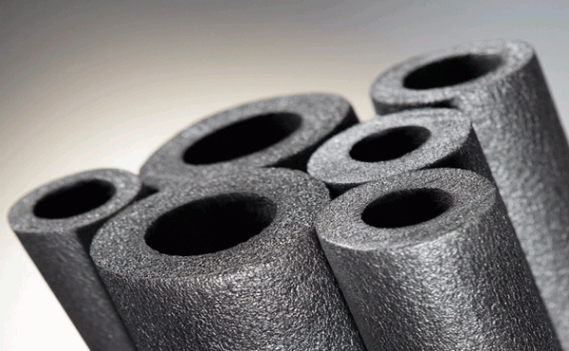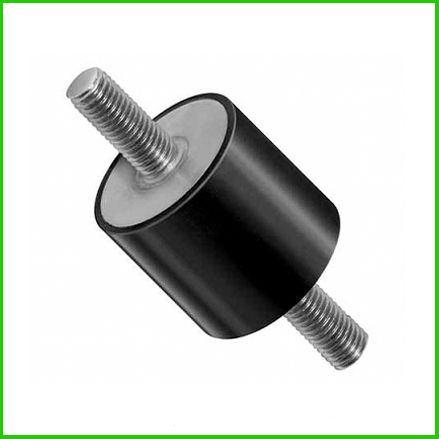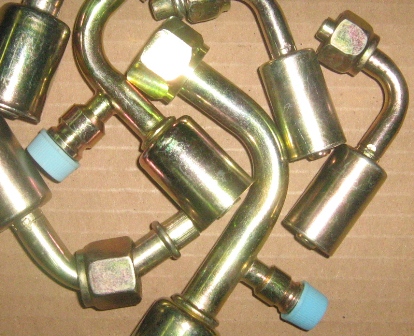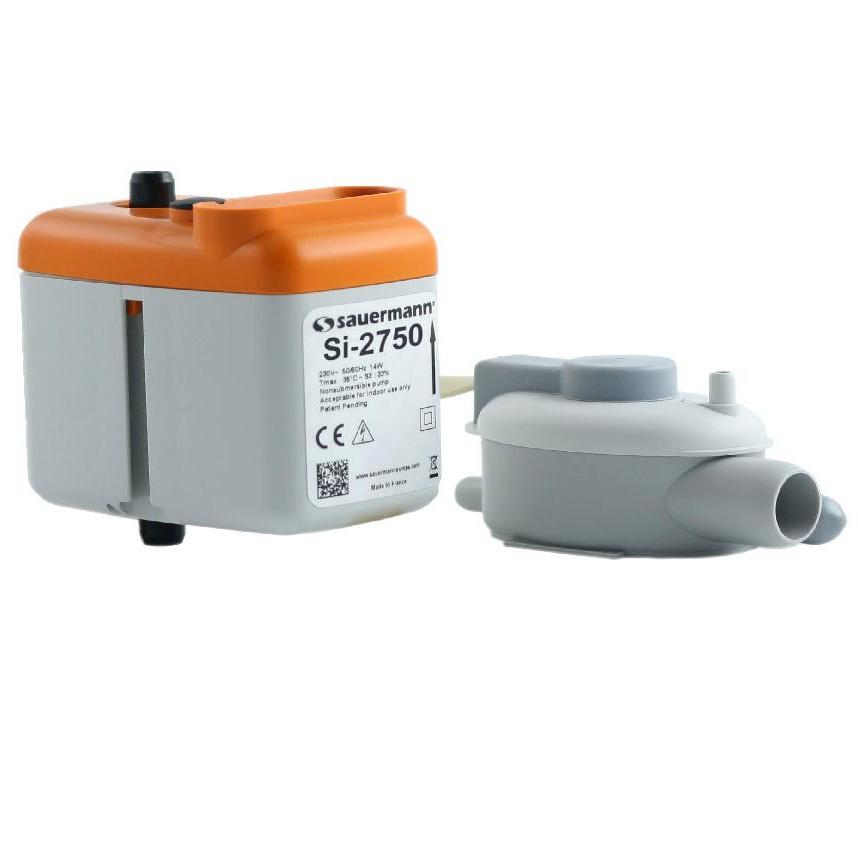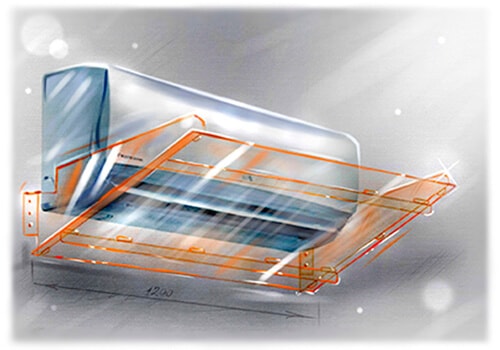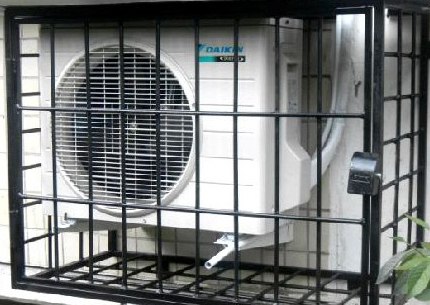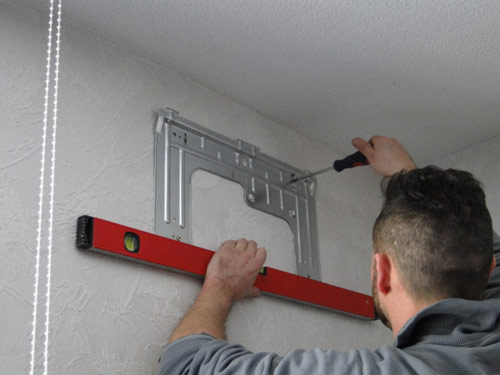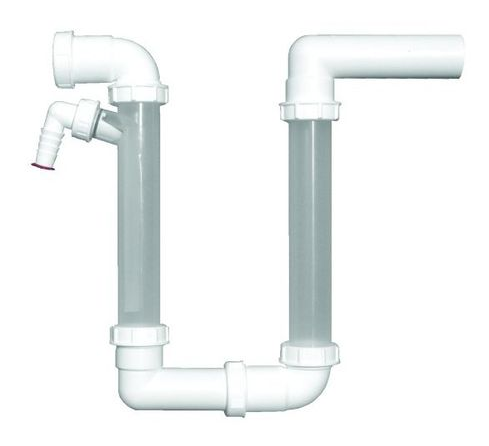The chiller-fan coil system is the most advanced in terms of cooling or heating rooms, but it requires preliminary development of project documentation, as well as special knowledge in the field of installation of air conditioners, electrical circuits. The system is complex, in addition it needs regular maintenance. The equipment can be used to heat not only small rooms, but also industrial facilities with large production areas, as well as residential buildings.
Before starting work, you should understand the types of fan coil units, their advantages and disadvantages in order to maximize the requirements for air conditioning, heating and ventilation of the room.
Types of installation of fan coil units
The basic diagram of a fan coil unit provides:
- the presence of a pipeline that transports hot or cold water, depending on the tasks in a certain period of time - winter, summer;
- the presence of a chiller that prepares the required water temperature and creates a flow of fresh air taken from the street;
- internal devices (fan coils) through which the room temperature is controlled.
- Cassette. Installed behind false ceilings. Suitable for large areas in shopping centers, industrial premises.
- Duct. Found in ventilation shafts.
- Wall mounted. A good choice for small spaces - apartments, offices.
- Floor and ceiling. Suitable for placement under ceilings or near walls.
Installation of chillers and fan coil units of various types has its own characteristics, as well as advantages and disadvantages:
- The duct is capable of performing three functions (cooling, heating, ventilation), but it requires accurate calculations of the consumed air volume, expert advice in terms of installing a water heating system for the winter period.
- Installation of cassette-type fan coil units saves space, air conditioning large rooms, but requires space under the ceiling, which is allocated for the installation of the unit.
- Installation of floor-type fan coil units makes it possible to quietly cool rooms of complex design, without affecting human health, but requires more power and space on the floor or under the ceiling.
- Connecting a wall-mounted fan coil is the least economical way, but easier.
Systems are two-pipe and four-pipe. The price of a four-pipe wiring is higher, since it simultaneously performs both heating and cooling. The two-pipe system is cheaper, but for the heating function it will be necessary to divert the pipes from the refrigeration unit and connect to the boiler during the heating season.
The estimate for the types and cost of work is made taking into account consumables, time spent, type of equipment and its capacity
Duct fan coils are mounted using the hidden connection method. The section in the ceiling must be movable to access the device.
Cassette, floor and wall units are mounted in an open way. Open type devices are easier to operate and maintain.
Differences in the installation of different types of indoor units
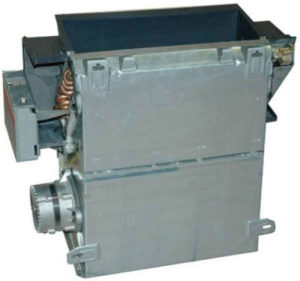
The scheme of a four-pipe fan coil is fundamentally different from a two-pipe scheme.In the first case, 2 circuits are connected, operating from air conditioning and heating systems. When switching modes, no additional measures are required, the task comes from the remote control. For a two-pipe system, all fluid must be drained before manual changeover. This method requires additional seasonal service and costing.
The method of installing indoor units is different if the devices are located:
- at different levels (floors), but have the same hydraulic resistance (HS);
- at the same level with the same HS;
- with different HS, but located at the same level;
- with different GEs at different levels.
Installation work should be carried out at the stage of construction or rough repair of the building. After the completion of the repair, the final measures are carried out - automatic adjustment of the equipment and the installation of decorative grilles on the cassette units.
Indoor units are installed in a case-based or open-frame method:
- Cabinet models are installed equidistantly around the entire perimeter of a room or building, regardless of the location of the rooms. This applies to a cooling-only two-pipe system.
- Open-frame models are installed mostly hidden. For open-frame units, anti-vibration mounts are provided.
Floor-standing units are considered easy to install, for which you need to install drainage with the required angle of inclination in order to avoid liquid stagnation, connect to the mains. Correctly following the instructions or focusing on the videos, you can do the work yourself.
Wall-mounted models require the help of a specialist who must:
- make the strapping correctly;
- set up control devices;
- check the pressure;
- make thermal insulation;
- lay pipes;
- make crimping;
- connect to the power supply.
For cassette models, it is necessary to provide sound insulation, vibration protection, correctly select and cut a hole in the false ceiling, then connect to the cold water supply and the heating circuit. All connections must be checked and tested before commissioning.
Shut-off valves

In cooling systems, three-way and two-way shut-off valves are installed. The trim assembly 2-way valve is simpler but less reliable. It is recommended in any case to install a three-way valve. The difference is as follows:
- When using a 2-way valve, chilled liquid continues to flow into the fan coil when it is turned off, but this is done less intensively. Cooling continues after shutdown.
- The 3-way valve completely blocks the flow of refrigerant, therefore, when turned off, the system does not cool the room.
It is recommended that the 3-way valve assembly be installed immediately during installation. Replacing the valve during operation will require additional funds and turning off the device.
Stages of installation work
Installation of the chiller-fan coil system is carried out in the following sequence:
- The chiller is installed in a technical room or on the roof.
- The installation site is determined according to the plan. The indoor unit case is fixed to the wall, ceiling or ventilation.
- The units are connected to air ducts. For duct models, valves are installed that regulate the supply of fresh air.
- The piping units are assembled near the fan coil units, sensors and taps are installed.
- Pipes are laid and thermal insulation is done.
- The drainage is discharged into the sewerage system.
- The system is connected to the mains.
- First start-up and tightness test - pressure test.
- Filling pipes with coolant and final testing of the facility.
- Drawing up an act of completed work.
Dismantling is carried out in the following sequence:
- overlapping nodes near fan coil units;
- disconnection from the water supply system;
- overlapping drainage;
- disconnection from the network.
If you plan to replace fan coil units, the pipe diameter of the old and new systems is taken into account.
Installation of an electrical diagram for connecting fan coil units
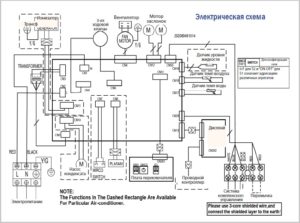
Before starting work, you need to familiarize yourself with the wiring diagram. Electrical equipment must be grounded.
Requirements for connecting fan coil units to the mains:
- use the cable according to the recommendations in the manual;
- organize a separate power supply with the required voltage;
- connect all wires directly to the shield, including grounding;
- the water circuit must be on the opposite side of the terminal box;
- the elements of the hydraulic circuit must not come into contact with the wires.
The unit starts up after an insulation test. The direction of rotation of the fan impeller, the operation of the drain pump, if available, an electric heater are checked separately.
The act is drawn up based on the test results. At the same time, an agreement is signed with the company for continuous service.
The installation of chiller-fan coil equipment must be carried out by specialists with experience and knowledge. This will improve the performance of the unit and reduce repair and maintenance costs.

